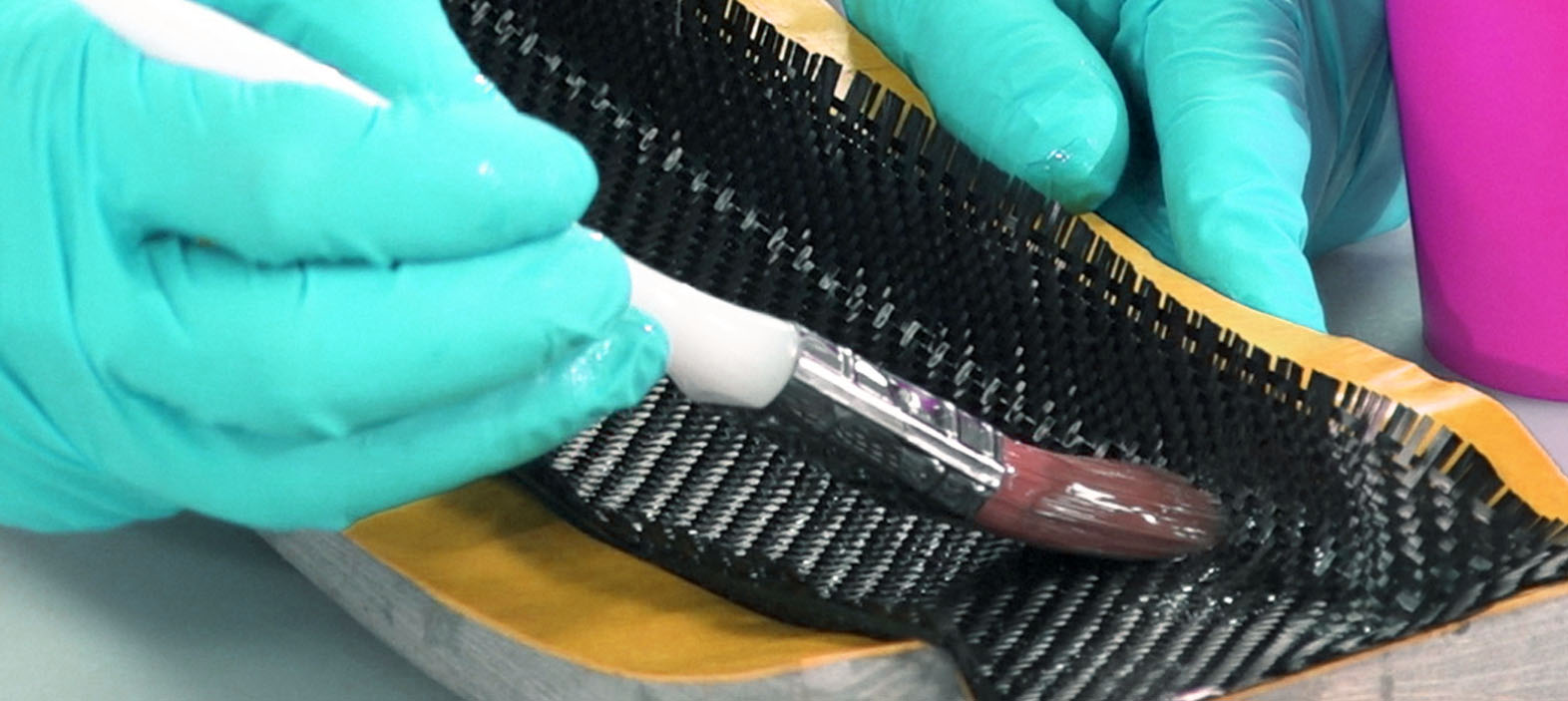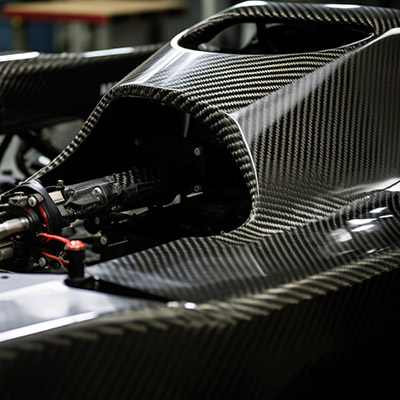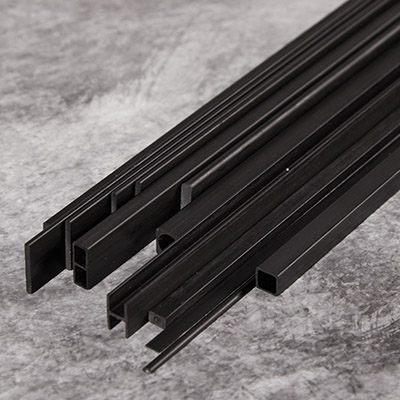
What is Vacuum Bagging Process?
👁 Reads: 2314
The vacuum bagging process is a technique used in various industries, such as aerospace, automotive, and marine, to create carbon fiber composite parts with high strength and lightweight characteristics. It involves the use of a vacuum to remove air and compress layers of materials, such as fibers and resin, during the curing or molding process.
The vacuum bagging process allows for improved consolidation of composite materials, reduces the presence of voids, and helps achieve consistent part quality. It enables the production of lightweight and high-strength composite components used in various industries. Generally, carbon fiber manufacturers use the technology for different products and solutions.
Here's a general overview of the vacuum bagging process:
Step 1 - Preparation
Start by preparing the mold or tooling surface. It should be clean, polished, and treated with a release agent to prevent sticking. Lay down a layer of mold release film or peel ply, which aids in part removal and surface finish.
Step 2 - Lay-Up
The lay-up stage involves placing the layers of composite materials, such as carbon fiber or fiberglass fabric, on the mold or previous layers. This may include reinforcement materials, core materials, and resin infusion media.
Step 3 - Vacuum Bag Placement
After the lay-up, a vacuum bag is carefully placed over the entire assembly, ensuring it completely covers the part and extends beyond its edges. The vacuum bag can be made of flexible plastic materials like nylon or polyethylene.
Step 4 – Sealing
The edges of the vacuum bag are sealed using specialized tape, often referred to as vacuum bagging tape or sealant tape. This creates an airtight seal, preventing air from entering or escaping the bag during the vacuum process.
Step 5 - Vacuum Connection
A vacuum line or tube is attached to the bag, typically through a small hole made in the bag or using a dedicated fitting. The other end of the vacuum line is connected to a vacuum pump or system.
Step 6 - Vacuum Application
The vacuum pump is activated, creating a negative pressure within the bag. The atmospheric pressure on the outside forces the bag to tightly conform to the shape of the part, compressing the layers together.
Step 7 - Curing or Molding
With the vacuum applied, the part undergoes a curing or molding process, depending on the specific materials being used. This typically involves applying heat and pressure, which can be achieved through an oven, autoclave, or other curing methods.
Step 8 – Monitoring
Throughout the curing or molding process, it's essential to monitor the vacuum pressure and temperature to ensure optimal conditions for the materials being used. Adjustments may be made to maintain the desired parameters.
Step 9 – Demolding
After the curing or molding process is complete, the vacuum pump is turned off, and the vacuum bag is carefully removed. The part is demolded from the mold or tooling surface, and excess materials, such as flash or excess resin, are trimmed or removed.
Carbon Fiber Products Manufactured Using Vacuum Bagging Process
Vacuum bagging is a manufacturing technology used in various industries, including aerospace, automotive, marine, and sports equipment manufacturing, to produce carbon fiber composite products. The technology to manufacture carbon fiber products helps create strong and lightweight structures. Here are some common carbon products produced using vacuum bagging:
Carbon Fiber Sheets - Widely used in applications such as aerospace panels, automotive components, sporting goods, and industrial equipment.
Carbon Fiber Tubes - Various diameters and lengths find applications in industries such as aerospace, robotics, sports equipment, and industrial machinery.
Carbon Fiber Panels and Panels - Utilized for structural components, interior trim, and decorative purposes in industries like automotive, aviation, and marine.
Carbon Fiber Molded Parts - complex shapes and contours parts are commonly found in aerospace, automotive, and sporting goods industries.
Carbon Fiber Laminates - Used to reinforce structures and add strength to various applications, such as wind turbine blades, aircraft wings, and automotive components.
Carbon Fiber Reinforcements - Tapes, fabrics braids and other reinforcements are then incorporated into other manufacturing processes like resin infusion or hand lay-up to create composite structures.
It's important to note that while vacuum bagging is a common method for producing carbon fiber composites, it is typically just one step in a larger manufacturing process that involves techniques like resin infusion, autoclave curing, or oven curing, depending on the specific requirements of the product being produced.
Advantages & Disadvantages of Vacuum Bagging Process
The vacuum bagging process offers several advantages and disadvantages, which are important to consider when deciding whether to use this technique.
Improved Consolidation
The use of vacuum pressure helps in achieving better consolidation of composite materials during the curing or molding process. It compresses the layers together, reducing voids and improving the overall strength and integrity of the part.
Enhanced Quality and Surface Finish
Vacuum bagging helps eliminate air bubbles and voids that can weaken the composite structure. This results in a higher-quality finished product with improved strength, durability, and surface finish.
Customizable and Versatile
The vacuum bagging process is highly adaptable and can be used for a wide range of part sizes, shapes, and complex geometries. It allows for the creation of intricate composite structures with consistent results.
Cost-Effective
Vacuum bagging is generally a cost-effective method compared to more advanced techniques like autoclave curing. It requires relatively simple equipment and is suitable for small to medium-scale production or prototyping.
Wide Range of Material Compatibility
The vacuum bagging process can be used with various types of composite materials, such as carbon fiber, fiberglass, and Kevlar, making it versatile for different applications and industries.
Time-Consuming
The vacuum bagging process can be time-consuming, especially when compared to other manufacturing methods. It involves multiple steps, such as lay-up, bagging, sealing, and monitoring, which can extend the overall production time.
Skill and Experience Required
Achieving optimal results with vacuum bagging requires expertise and experience. Proper technique is crucial for successful part consolidation, avoiding leaks, and ensuring consistent quality. It may take time to develop the necessary skills.
Limited Pressure and Temperature Control
While vacuum bagging provides some level of pressure control, it is not as precise as more advanced methods like autoclave curing. Temperature control is also more challenging, and the process may not be suitable for certain high-temperature curing applications.
Equipment Limitations
Although vacuum bagging equipment is relatively simple and cost-effective, it may have limitations in terms of the size and complexity of parts that can be accommodated. Large or highly complex parts may require more advanced techniques or equipment.
Potential for Leaks and Bag Failures
There is a risk of leaks or bag failures during the vacuum bagging process, which can compromise the consolidation of the part. Proper sealing and monitoring are crucial to prevent such issues.
It's important to carefully evaluate the specific requirements of your project, available resources, and desired outcomes when considering the advantages and disadvantages of the vacuum bagging process. In some cases, alternative manufacturing methods like autoclave curing or resin transfer molding may be more suitable.
For all your composite needs, high-quality carbon fiber products and technologies visit NitPro Composites. The specialized carbon fiber manufacturers offer a wide range of sizes and dimensions along with customized products and solutions.





